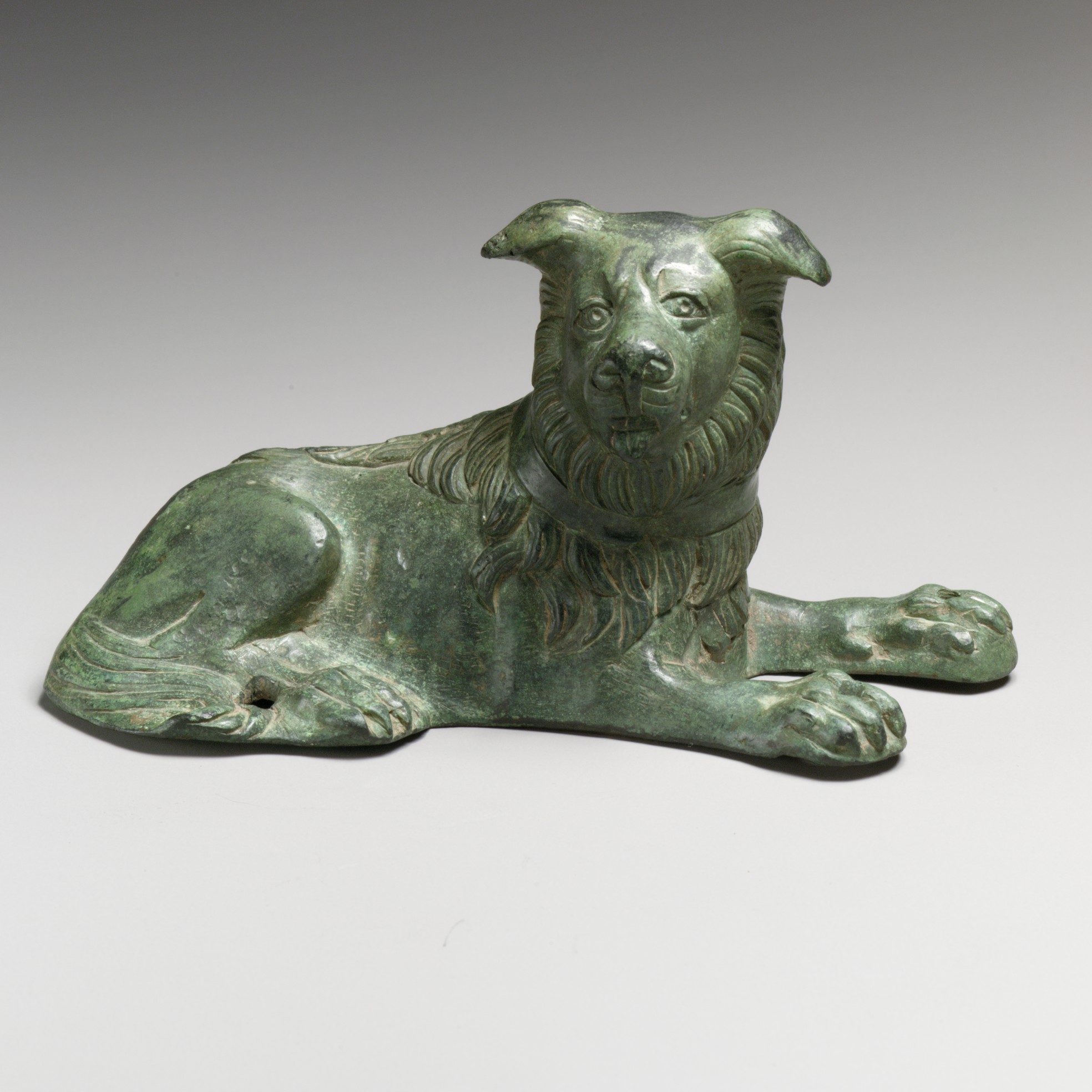This morning I read in the New York Times about the discovery of some previously unknown murals in Pompeii. This is exciting, of course, and not surprisingly I was especially drawn to this painting of Helen and Paris, who have been helpfully labeled in Greek:

The journalist writing about this story identified the other two figures as Helen’s handmaiden and “a despondent-looking dog.”
I must object to this characterization. Facial expresses are not universal. They do not always have consistent meanings across different cultures, let alone different species. To claim that this dog is despondent is to anthropomorphize it. I read this dog’s mood quite differently. To me, it appears to be alert, yet relaxed, a posture discernible in other images of dogs, such as this Roman bronze statuette in the Met:

Or in this early 21st century CE image of a dog in my living room, who, if memory serves, had only recently woken up:

His tongue is hanging out of his mouth because it dries out when he’s asleep and gets stuck that way, at least until he tries to lick something. Anyway, all this is to say that we must take species into account when interpreting ancient (and modern) facial expressions in any medium.
